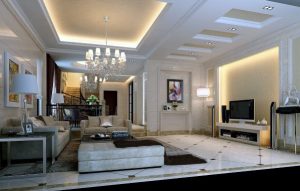With the help of an expert, an indoor lighting design and planning firm can design indoor lighting schemes that will help create the perfect lighting environment for a business, retail store, or other specific location. The most common areas that indoor lighting schemes are used in include commercial spaces, private homes, schools, malls, office buildings and other public areas. The interior designer will work with the client to determine what type of indoor lighting will be used and how the space will be accessed by customers. The process will start with an assessment of the space and the needs of the client, which will include size, number of people using the area, how the light will be distributed and the types of lighting needed.
 The next step in the process is to select the style of lighting, which will be influenced by the structure of the room, the types of furnishings within the space and the mood that the owner wants to create. Virtual reality lighting is a highly functional application of digital technology. It is specifically designed to give users an actual realistic experience and to help in the proper interpretation of the final design. There are a wide variety of applications and benefits to utilizing FL professional indoor lighting design software, including:
The next step in the process is to select the style of lighting, which will be influenced by the structure of the room, the types of furnishings within the space and the mood that the owner wants to create. Virtual reality lighting is a highly functional application of digital technology. It is specifically designed to give users an actual realistic experience and to help in the proper interpretation of the final design. There are a wide variety of applications and benefits to utilizing FL professional indoor lighting design software, including:
* Creates color temperature ambiance – Indoor lighting design programs allow the designer to adjust the color temperature of the light fixtures. This allows the designer to control the mood of the space. For example, you can use pink light fixtures in a pink room. This is just one example of how you can creatively use FL programming to create unique and aesthetically pleasing spaces. Color temperature controls are essential in helping you create the right atmosphere, and the designer can adjust and fine-tune color temperatures for any room design or space.
* Increases energy efficiency – The optimal function of indoor lighting design applications is to increase energy efficiency, and they do this through the use of FL cabinets, lighting and task lighting. The designer controls the different types of lighting and the types of cabinets with the most efficient cabinets. They can also determine which cabinets have the lowest R-value. R-value is based on the need for illumination, which indicates the amount of light needed to achieve the desired task.
* Improves the appearance of ceilings – Indoor lighting designed for the purpose of improving the ceiling fixtures can be installed with the use of a dimmer. The dimmer can be set to control the lighting level and it can be used for decorative purposes as well. These types of indoor lighting design applications also feature wall sconces and other light fixtures to help illuminate the area around the area that needs light. For wall sconces, the design may include different types of lights, such as a sconce with wall plugs and wall-mounted plug-in wall sconces.
* Increases safety and reduces eye injuries – Ceiling fixtures are installed so that there will be plenty of ambient light and no dangerous shadows. This makes it safer to do household chores, and more attractive to look at the ceiling. Indoor lighting can also be designed to improve safety by having spot lights or wall-mounted spot lights installed. This improves the visibility of the area that needs to be illuminated, and reduces the chances of accidental falls or hits to heads due to faulty interior lighting fixtures. For more details on lighting design visit https://www.southfloridalightingdesign.com/fort-lauderdale-fl/.